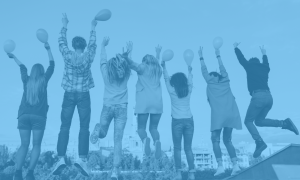
Getting a ‘Yes’ from the Decision Maker
So, you’ve got a job interview, but how do you get the interviewer to pick you above the other candidates? Landing that
Energy conservation, planning, pacing, prioritising, rest
In this episode of Brain or Shine, we’re going to look at how to conserve energy to cut out fatigue and the importance of planning, pacing, prioritising and rest.
Life is busy and there’s loads of things going on at once. Do you sometimes live life at 100mph (or did you do this pre-brain injury)?
I certainly did! At the time, as a freelance motivational speaker, I was driving up and down the country, visiting schools, and then it was back home for lots of exiting, busy pursuits. I love running and was also keen on playing football. Then there would be lots of fun social events all the time. Life was great.
However, it wasn’t sustainable to keep this up following brain injury so I had to make some major changes.
In this episode, we’ll explore ways to conserve energy, so here’s some great tips that have worked for me:
Firstly, recognise what you can and can’t do. Once you realise what is harder to do or no longer possible, it helps to move to the next stage of accepting the changes.
For me, I was told I could no longer play football because of the risk of contact and further injury. OK, I’m lucky to be a high-functioning survivor but being told I could no longer do something I enjoyed so much, it took a while to adjust. It was a case of focusing on alternative fitness activities.
Be honest with those around you and to yourself. Tell others about your situation and you’ll find a lot of people are pretty understanding.
I find it energy sapping sitting in a busy, noisy environment so, I now find it comfortable to ask if it’s ok to sit in a quieter corner, with my back to the wall to cut out noise. I’ve yet to find anyone who has refused.
The starting point is to be honest with yourself though. Be at peace with the changes and what adjustments you need to make. Of course, this is easier to say and a lot more work to do but you can do it.
Get good at saying no. Yes, that word that sounds negative and a lot of people feel really uncomfortable saying. How much does it pain you to say no to a friend or family member?
If you’re like me, I’ll do anything for anyone, it’s not going to be easy. I love being involved in new and exciting tasks or helping someone out if they ask for it. And trust me, this one took ages to master.
However, now I can say to people that I’m not in a position to take that particular task on or today is a day where I’m a little fatigued so, I’ll have to rearrange. Many people are extremely understanding if you are honest and explain to them.
Accept change and understand that you may not be the person you once were. Ouch! Yep, ouch indeed! I wanna do all of those things I could before.
Many of us suffer grief following a major change, such as brain injury. There can be a huge sense of loss or emptiness when coming to terms that you may never be the same again.
For me, engaging in personal development was huge. Reading self-help books, associating with positive people and engaging in things I enjoy and can do. Note the word can do? Lots of people focus on the things they can’t do and forget the things they can.
Therapy was huge in my mental recovery. Why not engage in a positive, like-minded group or even have some sessions with a life coach? Try meditation and relaxation.
Fatigue can consume us and creep up, so recognise when need to rest. It may be a short-term sacrifice for a longer-term gain and planning is key to managing it.
Look at planning the day, the week or even the month ahead. Remember, plans can be changed but if you have a good idea of what lies ahead, you can put in rest and recovery times.
The best piece of advice I was given in my brain injury support groups was to rest on good days too. This is where planning and rest go hand in hand.
You may feel great after a couple of busy or draining days and feel like you can take on the world. Have you been there and tried to push through? Yep, me too! And I’ve paid the heavy price later on.
These are all tried and tested tips that have worked for me and I hope they’ve helped you too.
Below is a link to a video from our YouTube channel for more tips, hit subscribe for more.

So, you’ve got a job interview, but how do you get the interviewer to pick you above the other candidates? Landing that

For GCSE and A Level students across the UK, exam season is finally over. You’ve done it! Now’s the perfect time to

A phrase that we’ve used for years is, “You live your life forwards, but you learn it backwards.” Many of us are